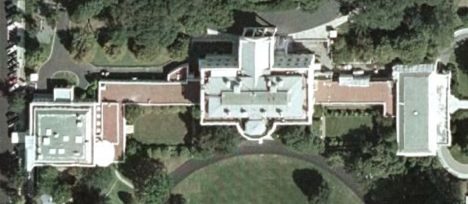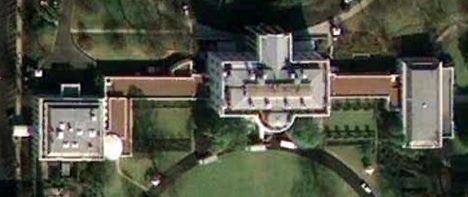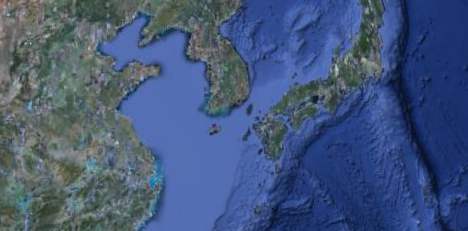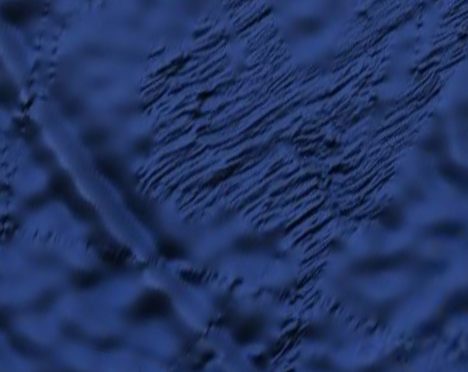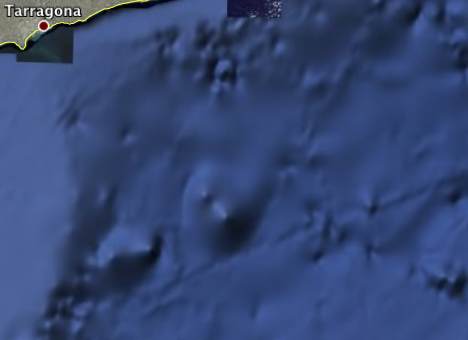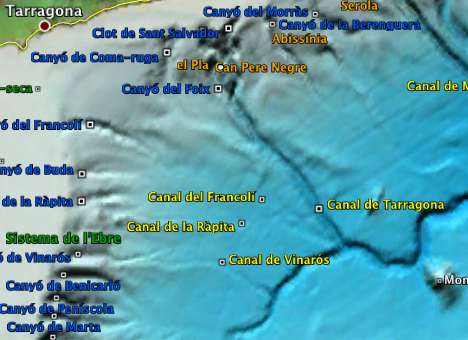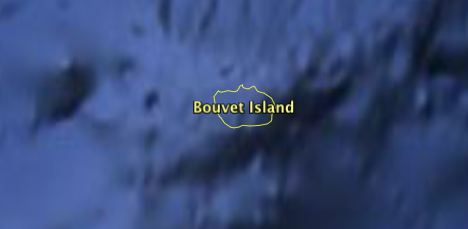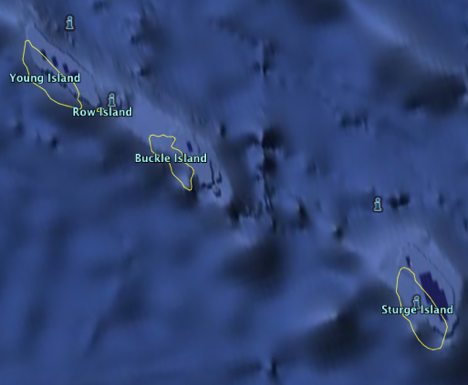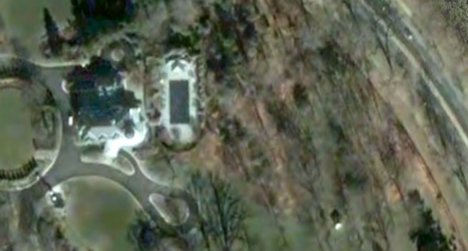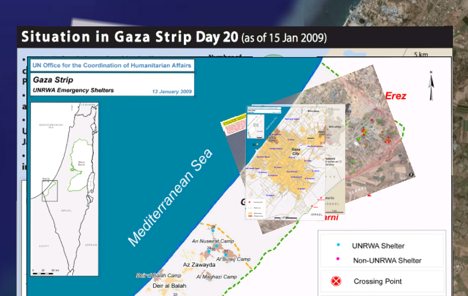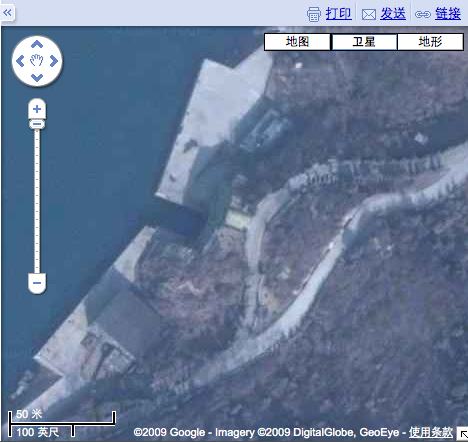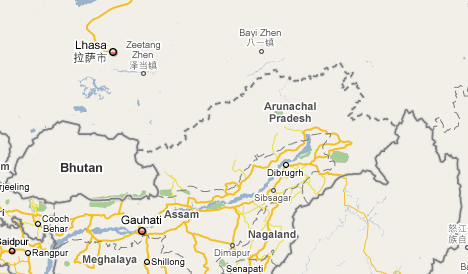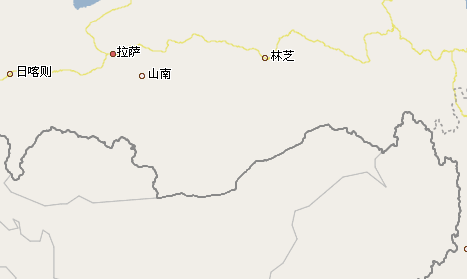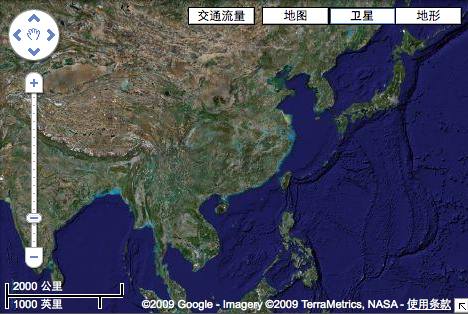Unfortunately, it looks like I’m coming into another busy period, so the following is all too brief, but that’s better that than all too old…
- Google Ocean coming soon after all? Perhaps the new 2D shaded bathymetry layer does not mean we’ll have to wait a while for the real 3D thing: AppScout and WebProNews both report that a “special announcement about Google Earth” is due on February 2, and in addition to the usual suspects speaking, also in attendance will be noted oceanographer Sylvia Earle. Both sites speculate Google Ocean is coming.
What might Google Ocean entail? Considering how a combined land and ocean dataset might be problematic from a realism perspective for Google Earth (after all, the oceans aren’t empty), it could well make sense to add another separate dataset, in addition to Google Sky and Google Earth. You could then switch between Google Earth and Google Ocean for a certain view, much as you can now switch to Google Sky.
But all this is speculation — Google Lat Long hasn’t announced this week’s 2D bathymetry update yet, so maybe that’s what people are gathering for in San Francisco next week.
- Scilly Google: More feedback on the new bathymetry layer, which erased some islands where the base imagery was 15m per pixel. Richard Treves finds that the Scilly Islands off the UK coast are gone — leaving just ghostlike roads to service the estimated 2,000 people who live there. Richard makes an overlay available that puts the islands back, and notes that he refrained from making a scilly pun. I have no such qualms:-)
- Cove: In the aftermath of the 2D bathymetry update this week, a commenter alerted me to Cove, for Windows and Mac, that looks very much like what I imagine Google Ocean might look like.
- Behind the new bathymetry: Kurt’s weblog has an interesting correspondence with David Sandwell from the Scripps Institution of Oceanography, who was involved in the making of the 30 arcsecond bathymetry layer and who confirms that this is the one Google used. He also points to the dataset’s signature, etched into ocean floor near Indonesia.
- DEM resolution I: Google used the SRTM30_Plus DEM for the new ocean bathymetry data, but this DEM also uses Space Shuttle topography data for land areas, which is not at as high a resolution as some topographical data that’s been used in Google Earth. Could this be why I got an email this week from Jonathan de Ferranti, who writes re Google Earth:
I do not know if you have noticed, but the improvements to the French, Italian, Austrian, German and Slovene Alps, and the Andes […] have been wiped out. Can you suggest any explanation for this?
Perhaps the SRTM30_Plus DEM layer has something to do with it? However, Jonathan adds that there have been some major terrain improvements in other areas, including Iceland, the Ural mountains, Reunion, the Central Siberian plateau.
- DEM resolution II: Two weeks ago (how time flies) I got a note from Andy Fin regarding an improved DEM for the UK:
Previously all coasts gently sloped to the sea from a half-mile or so inland. Places like Dover Cliffs and Beachy Head etc. were just rubbish. Still not 100% perfect as not completely vertical where required, but still much better. I have a suspicion that all terrain data has been improved as the inland stuff seems to fit better and be a bit more detailed too.
- Inaugural gigapan:
141.4 Gigapixel photograph of the US presidential inauguration earlier this week in Washington DC. Remarkably few stitching artefacts. - Digital Karnak: I’m surprised I hadn’t seen this earlier, but happy to have found it now, via Vincent Brown’s digital Egyptology resource Talking Pyramids: UCLA’s Digital Karnak, a 3D rendition of the Temple of Karnak as textured KML. Warning, this is a time waster, especially if you’ve been to Karnak.
- KML in games: A regular reader and sometime contributor who shall remain anonymous unless he makes himself known writes:
I’ve been playing Burnout Paradise which is an online ‘open world’ racing game for the Xbox 360 (hate Microsoft/vendor lock-in but love the game) and thought the KML maps where an interesting use of KML to describe game world content.
I keep hoping racing/flight or other open world sim games will converge more with actual real-world environments/cities, etc. Maybe I should try to write an application similar to the ‘milktruck’ GE demo to allow some competitive ‘racing’ in GE :)
Yes please!
- Google Earth gadget: Better mentioned late than never on this blog: Google now lets you create an embedded Google Earth gadget on a web page that loads a KML file of your choice.
- Microsoft Flight Simulator developers axed? Gamasutra reports they are hit badly by the layoffs, via All Points Blog. Weird. Why not just sell the unit, then, even if on the cheap?
Looks like my flight is leaving. I guess there will have to be a part II…
